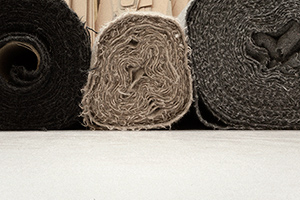Synthetic serendipity
Monday, 12th March 2018
When you have a clutch of world-beating suppliers at your doorstep, there’s really no excuse not to visit them from time to time. Not only does it seem lazy not to, there are benefits galore in taking time out from the daily grind to go see what they’re up to, how, who, where, and why.
Take this one time last year, and a visit to a maker of heavy woollens in what used to be known quite widely as the Heavy Woollen District of West Yorkshire. Can’t move for military-grade and top-spec uniform woollens in the place — loom after loom in room after room — and it has been thus ever since about the time King George III was on the throne. But what’s that, on the otherwise unremarkable rapier loom over there? It’s not heavy and it’s not woollen. But yet this cloth — it turns out this cloth is tougher than all its sheep-shorn stablemates put together, squared, with several zeroes stuck on the end.
Doesn’t look like it, though. The best way to describe its appearance is as mid-weight cotton, say — but mid-weight cotton from a fairly distant utopian future, where mid-weight cotton no longer creases, fades, or ages to any great degree. And where mid-weight cotton has a great ripstop grid running down its back, and is the all-time leading top-scorer on the Martindale rub-test. Look closer, and dig out your textile glossary, and you learn it’s a plain-weave double-sided ripstop, composed of poly- and meta-aramid fibres woven together and working very much in tandem. Weapons-grade strength, in layman’s terms. It is also the bane of factory life — never not a positive — since, so combative are its fibres, that in no time at all it blunts obsolete scissors and needles of sewing-machines.

And, befitting an upbringing in God’s Own Country, it has a real taciturn streak, this cloth, and gives but a flat “no thanks” to namby-pamby things like wind and rain. So, when you wear a one-piece sleeve coat made from it, say, you can barely feel it on your back, and even on a humid underground train it allows you to feel crisp and dry. But soon as the rain comes down, no matter how much or for how long, you’ll be bone-dry beneath. Comfortable temperature-wise, too, since it actively wicks moisture away from the skin.
It helps put certain things in perspective, this material. For one, there’s that pure, unbroken continuity, with the mill on whom the military and emergency services of the land have depended for tough technical textiles for nigh-on two centuries carrying on doing just that — only now it isn’t just for heavy melton and duffle cloth. And, for two, you have the juxtaposition of its high-tech specification with the low-tech likes of Ventile. They keep the rain off and wind out, both of them, but they go about it in very different ways.
First to use the material here at the workshop, and first perhaps on all of civvy street, are the car coat, the flight jacket, and now the parka. Likely more to come: it is a most technical material, this weatherproof ripstop, but it handles and drapes remarkably well. And so perhaps a trench or balmacaan, or a very overqualified tailored jacket and trouser.



